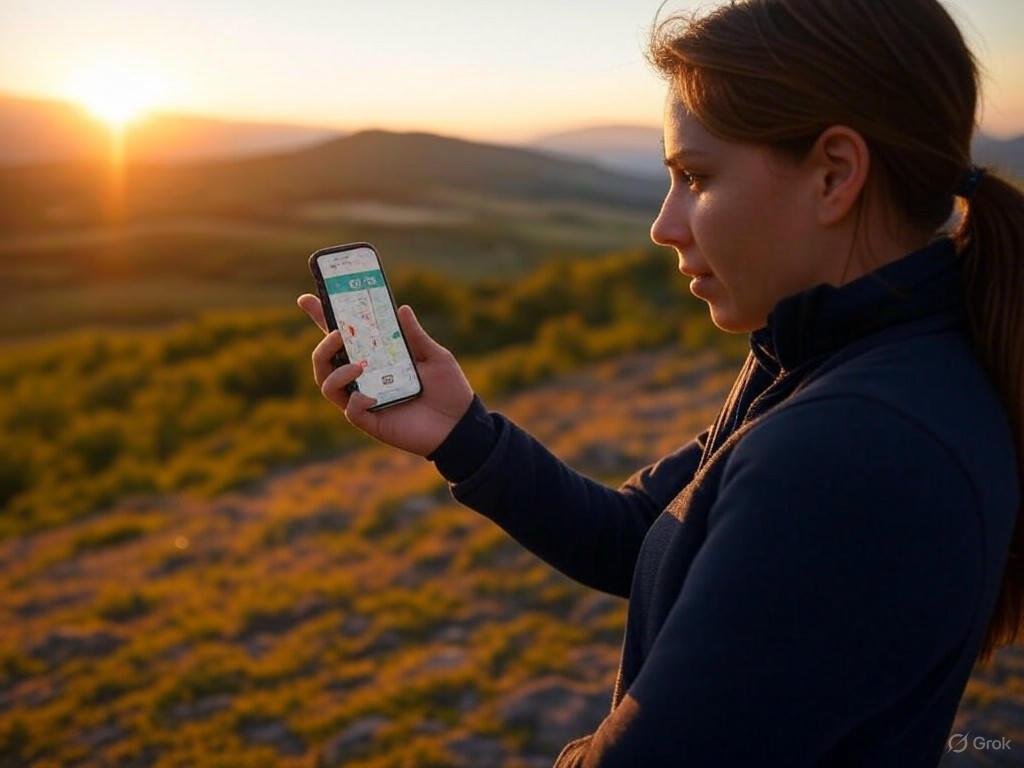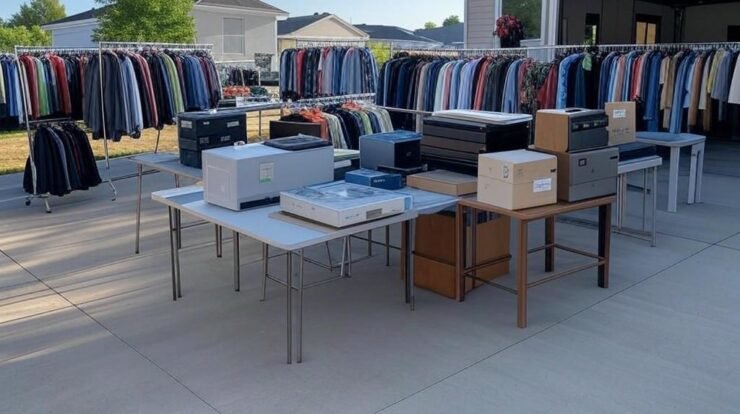Google Maps is more than just a tool to find your way around town. It’s a goldmine for anyone looking to earn extra cash or even build a full-fledged business. Whether you’re a freelancer, a small business owner, or just someone with a knack for exploring, there are countless ways to turn Google Maps into a money-making machine. In this in-depth guide, I’ll walk you through practical, actionable strategies to leverage Google Maps for profit, drawing from my own experience and insights from others who’ve successfully tapped into this platform. From contributing as a Local Guide to creating location-based content, here’s how to earn money from Google Maps in 2025.
Why Google Maps Is a Money-Making Powerhouse

Google Maps is one of the most widely used navigation and discovery platforms in the world, with billions of users relying on it to find businesses, plan trips, and explore new areas. Its massive reach makes it a fertile ground for entrepreneurs and side hustlers. The platform’s data-driven ecosystem rewards contributors who provide accurate, helpful information, and businesses that optimize their presence can attract floods of customers. By understanding how to navigate and contribute to Google Maps, you can carve out a slice of this digital pie.
The beauty of earning money through Google Maps lies in its accessibility. You don’t need a fancy degree or a huge budget—just a smartphone, an internet connection, and a willingness to learn. Whether you’re adding photos, writing reviews, or building a location-based business, Google Maps offers opportunities for anyone with a bit of hustle.
1. Become a Google Local Guide and Monetize Your Contributions
One of the easiest ways to start earning money with Google Maps is by becoming a Google Local Guide. This program encourages users to contribute reviews, photos, videos, and other details about businesses and places on Google Maps. While Google doesn’t directly pay Local Guides, the perks and visibility you gain can open doors to income opportunities.
How to Get Started as a Local Guide
- Sign Up: Go to Google Maps, click on the “Contribute” tab, and sign up for the Local Guides program. It’s free and open to anyone with a Google account.
- Contribute Content: Add reviews, photos, or videos of local businesses, landmarks, or attractions. Answer questions about places, verify information, or suggest edits to keep Maps accurate.
- Earn Points: Each contribution earns points, which help you level up in the program. Higher levels come with badges and perks like early access to Google features or event invitations.
Turning Local Guide Contributions into Cash
While the program itself doesn’t offer direct payments, you can monetize your Local Guide status in several ways:
- Partner with Local Businesses: As a high-level Local Guide, your reviews and photos carry weight. Businesses may pay you to visit their locations, write glowing reviews, or post professional-quality photos. For example, I’ve worked with small cafes that offered $50-$100 for a detailed review and a set of polished images.
- Build a Portfolio: Use your contributions to showcase your photography or writing skills. This can lead to freelance gigs with businesses or tourism boards looking for content creators.
- Gain Visibility: High-level Local Guides often get noticed by brands or local organizations. I’ve seen guides invited to exclusive events or offered sponsored trips, which can translate into income through content creation or affiliate marketing.
To maximize your earnings, focus on quality over quantity. Write detailed, honest reviews that help users make informed decisions. Upload high-resolution photos that showcase a place’s vibe. For instance, a well-lit photo of a restaurant’s signature dish can drive more customers than a generic storefront shot. Aim to contribute consistently—say, 5-10 contributions per week—to build your reputation and level up faster.
Read more: Make Money From Your Phone Today – Proven Methods for Immediate Earnings
2. Optimize Local Businesses for Google Maps
If you’re a small business owner or a digital marketer, optimizing a business’s Google Maps presence can be a lucrative service. Many local businesses, from coffee shops to auto repair stores, rely on Google Maps to attract customers. By helping them stand out, you can charge for your expertise.
Steps to Optimize a Business on Google Maps
- Claim the Listing: Ensure the business has a verified Google Business Profile. This is the foundation of appearing on Google Maps.
- Complete the Profile: Fill out every detail—business hours, contact info, website, and categories. Incomplete profiles rank lower in search results.
- Add High-Quality Visuals: Upload professional photos of the business, its products, or its team. Videos, like a 360-degree tour, can also boost engagement.
- Encourage Reviews: Help businesses collect positive reviews from customers. Respond to reviews professionally to build trust.
- Use Keywords: Incorporate relevant keywords (e.g., “best pizza in Chicago”) in the business description and posts to improve local search rankings.
Monetizing Your Optimization Skills
You can offer optimization services as a freelancer or agency. For example, I’ve charged $200-$500 per client to set up and optimize their Google Business Profile, including keyword research and photo uploads. If you’re new to this, start by offering your services to local businesses in your area. Reach out to mom-and-pop shops that may not have the time or know-how to manage their online presence.
Another angle is to teach businesses how to maintain their profiles. Create workshops or online courses on platforms like Udemy, where you can share your expertise. I know a marketer who earns $2,000 a month by offering monthly Google Maps optimization packages to small businesses.
3. Create Location-Based Content for Blogs or YouTube
Google Maps isn’t just a navigation tool—it’s a treasure trove of inspiration for content creators. By exploring places on Google Maps and creating content around them, you can build a blog, YouTube channel, or social media presence that generates income.
Ideas for Location-Based Content
- City Guides: Use Google Maps to find hidden gems in your city, like quirky cafes or scenic hiking trails, and create detailed guides. For example, a blog post titled “10 Must-Visit Coffee Shops in Seattle” can attract readers and affiliate revenue.
- Virtual Tours: Record videos of unique locations using Google Maps’ Street View or your own footage. These can be monetized through YouTube ads or sponsorships.
- Niche Reviews: Focus on a specific type of place, like pet-friendly restaurants or accessible tourist spots, and build a niche audience.
Monetizing Your Content
- Affiliate Marketing: Link to booking platforms like TripAdvisor or Expedia in your city guides. For every booking made through your links, you earn a commission.
- Sponsorships: As your audience grows, businesses may pay you to feature their locations. I’ve worked with tourism boards that paid $1,000 for a single blog post highlighting their city’s attractions.
- Ad Revenue: If you’re running a blog or YouTube channel, display ads can generate passive income. A well-optimized blog post about “hidden gems in NYC” could earn $50-$100 per month through Google AdSense.
To succeed, use Google Maps to research high-traffic areas or trending locations. For instance, check the “Popular times” feature to find bustling spots that attract visitors. Then, create content that’s both engaging and optimized for search terms like “things to do in [city]” or “best restaurants near me.”
Read more: Unlock Earnings with Online Surveys That Pay You – Your Ultimate Guide
4. Offer Location-Based Services
Google Maps can be the backbone of location-based services that cater to specific needs. Here are a few ideas to get you started:
- Tour Guide Services: Use Google Maps to design custom walking tours or day trips. Promote your services on platforms like Airbnb Experiences or ToursByLocals. I know a guide in San Francisco who earns $150 per tour by showcasing historic neighborhoods.
- Delivery or Errand Services: Use Google Maps to optimize routes for delivery or errand-running businesses. Apps like DoorDash or TaskRabbit rely on efficient navigation, and you can use your expertise to maximize earnings.
- Real Estate Photography: Combine Google Maps’ satellite view with on-the-ground photography to offer unique property tours for real estate agents. This niche can pay $100-$300 per shoot.
To stand out, use Google Maps to identify underserved areas or niches. For example, I helped a friend launch a pet-friendly tour business by mapping out dog parks and cafes in her city. She now earns $3,000 a month by catering to pet owners.
5. Leverage Google Maps for E-Commerce and Dropshipping
If you run an e-commerce or dropshipping business, Google Maps can help you identify high-demand areas for your products. For example, if you sell outdoor gear, use Google Maps to find popular hiking or camping spots and target ads to those regions.
How to Use Google Maps for E-Commerce
- Market Research: Analyze popular locations to understand consumer behavior. For instance, if you notice a cluster of gyms in a city, you could sell fitness equipment to that area.
- Local SEO: Optimize your online store for local searches, like “buy hiking gear near me.” Include your business on Google Maps to attract nearby customers.
- Dropshipping Niches: Use Google Maps to find niche markets, like beach towns for swimwear or ski resorts for winter gear.
I worked with an e-commerce seller who used Google Maps to target coastal cities for her swimwear line. By running geo-targeted ads, she boosted her sales by 30% in just three months.
Read more: Unlocking the Secret to Earning Cash – Surveys That Pay Real Money Revealed!
6. Build Apps or Tools Using Google Maps API

If you have coding skills, the Google Maps API is a powerful tool for creating apps or services that businesses will pay for. The API lets you integrate Maps features like geolocation, directions, or place details into your own applications.
Ideas for Google Maps API Projects
- Custom Navigation Apps: Build an app that offers specialized routes, like scenic drives or accessible paths for people with disabilities.
- Business Analytics Tools: Create a tool that analyzes foot traffic data from Google Maps to help businesses choose optimal locations.
- Delivery Optimization: Develop software that optimizes delivery routes for small businesses, saving them time and money.
Monetizing Your API Projects
You can sell your apps on platforms like CodeCanyon or offer them as subscription-based services. For example, a friend built a route optimization tool for local delivery businesses and now charges $50/month per user. Even if you’re not a coder, you can hire a developer to bring your idea to life and split the profits.
Tips for Long-Term Success
To make the most of Google Maps, keep these tips in mind:
- Stay Consistent: Whether you’re contributing as a Local Guide or optimizing business profiles, regular effort builds credibility and results.
- Focus on Quality: High-quality photos, reviews, and content stand out and attract more opportunities.
- Learn SEO Basics: Understanding how to optimize for local search terms like “how to earn money from Google Maps” or “best local businesses” can drive traffic to your content or services.
- Network Locally: Connect with business owners, tourism boards, or other Local Guides to find collaboration opportunities.
Challenges and How to Overcome Them
Like any side hustle, earning money from Google Maps comes with challenges. Competition can be fierce, especially in popular areas. To stand out, focus on niche markets or underserved locations. For example, instead of reviewing every restaurant in a big city, specialize in vegan spots or food trucks.
Another challenge is keeping up with Google’s algorithm changes. Stay informed by following Google’s official blogs or joining Local Guide communities on platforms like Reddit. Finally, be patient—building a reputation or audience takes time, but the payoff can be substantial.
Final Thoughts
Google Maps is a versatile platform that offers endless opportunities to earn money, whether you’re contributing as a Local Guide, optimizing business profiles, creating content, or building location-based services. By leveraging its tools and data, you can turn your knowledge of places into a steady income stream. Start small, experiment with different strategies, and scale up as you gain experience. With a bit of creativity and persistence, Google Maps can become your ticket to financial success in 2025.
So, what are you waiting for? Open Google Maps, start exploring, and turn your local expertise into cash. The opportunities are right at your fingertips—literally.




